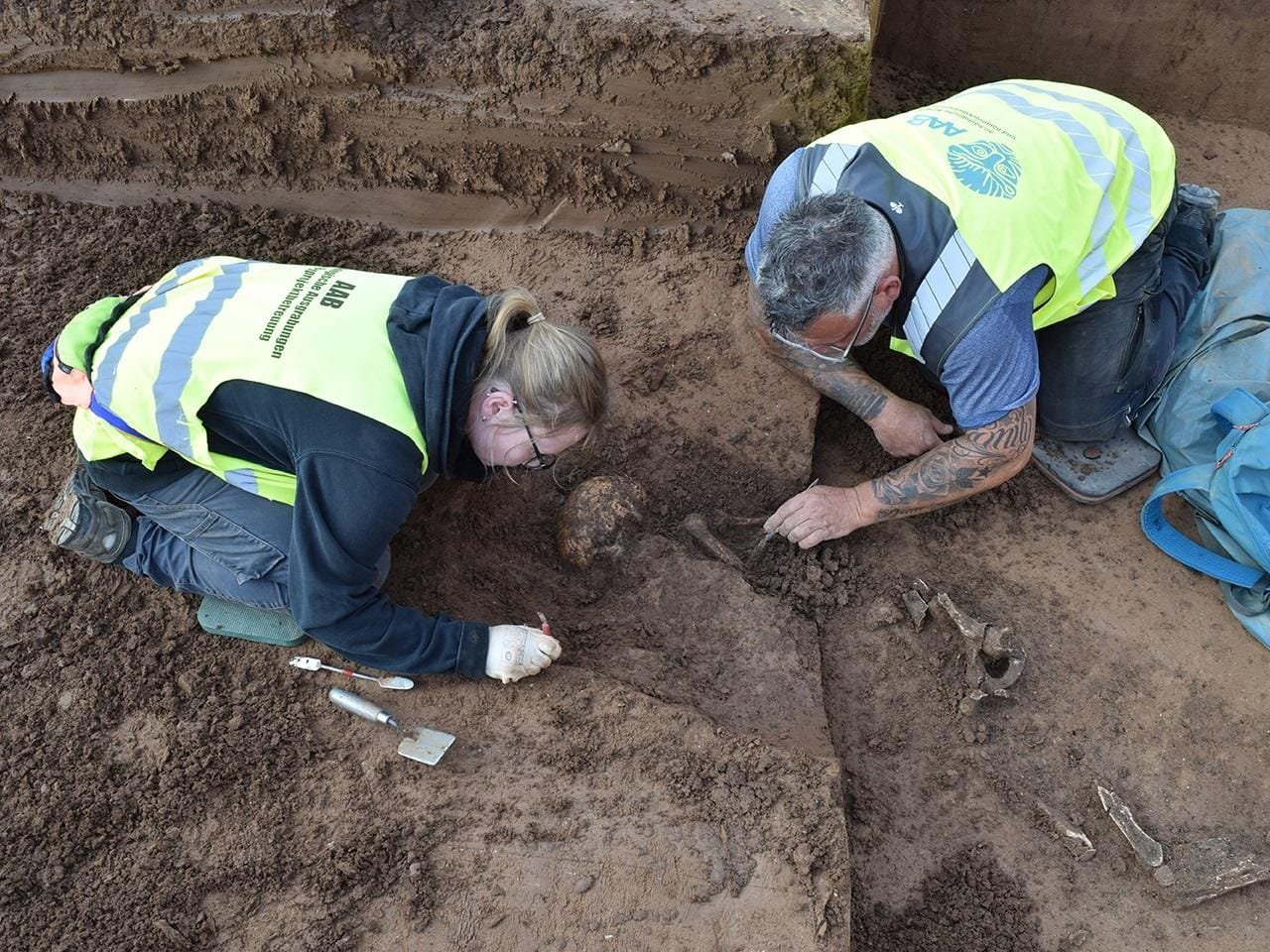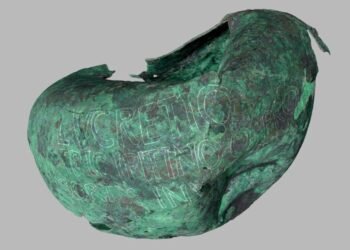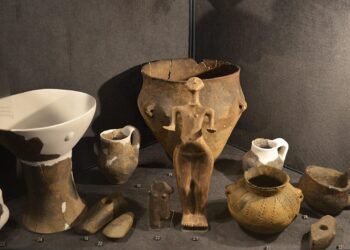In the fall of 2024, archaeologists uncovered 17 cremation and inhumation burials, as well as a horse burial, at the Roman cemetery in Heidelberg-Neuenheim, dated to the 1st through 3rd centuries CE.

The discoveries, resulting from excavations in advance of the construction of a new building for the German Cancer Research Center (DKFZ) on Berliner Straße, complement earlier investigations at the site. The cemetery, with some 1,400 burials, is the largest Roman necropolis discovered in Baden-Württemberg and was entirely excavated from 1951 to 1969 before the development of the Neuenheim Field.
The 2024 excavation, carried out by the archaeological company AAB under the supervision of the State Office for Monument Preservation (LAD) of the Stuttgart Regional Council, examined an area with a dense concentration of graves that had already been explored in 1966. The archaeologists found a total of 12 cremation burials, 5 inhumation burials, and a horse burial. Most notably, some graves had been missed or only partially explored during the earlier investigation, likely due to time pressure and the methodological limitations of that time.
In the northwest section of the excavation site, two cremation graves were discovered, which housed exceptionally valuable grave goods comprising ceramic plates, bowls, jugs, oil lamps, glass beads, and metal artifacts that had been incinerated on the pyre. Nonetheless, these items exhibited considerable compression and damage as a result of their prolonged usage as a parking facility for the DKFZ.

In contrast, a well-preserved brick slab grave stood out. Sarah Roth, the archaeologist leading the LAD team, explained, “The human cremated remains were placed in a box made of bricks with a lid. Around this box, three intact handled jugs, likely used as libation vessels during the burial, were discovered.”
Another example of double burial was found with the inhumation graves. In this burial, an adult male was placed supine, with only the iron shoe nails of his clothing surviving. A second adult individual was placed above him, in a head-to-foot direction, with their legs to one side. Roth suggested that a later cremation pit dug into the grave might have disturbed the original position of the second body, which still had its leg bindings, of tendons, intact.

In addition, traces of the 1966 excavation provided invaluable insights concerning the meticulous nature of earlier work, which—considering substantial constraints of time—provided a great level of detail. According to Roth, former excavations have often relied upon narrow trenches for identifying the position of the graves; thereby missing more peripheral or deeper interments. Artifacts, including a tin can and pieces of glass that are found within the back-filled trenches, represent how fast modern activity may lay new layers of archaeological material.
Roth added: “In ancient times, it was vital to be remembered after death. Graves were often located along heavily traveled roads leading out of cities, prominently displayed with monuments or gravestones commemorating the deceased.” The burial ground at Heidelberg-Neuenheim extended along the Roman road to Ladenburg, stretching approximately 370 meters northwest of today’s Gerhart-Hauptmann-Straße into the Neuenheim Field.

The scale and preservation of this burial ground offer a unique opportunity to study a wide range of Roman burial rites and artifacts. Future anthropological analysis could reveal details about the individuals buried, such as their sex, age at death, and possible illnesses. Roth concluded, “This site provides an invaluable chance to conduct statistical evaluations and gain deeper insights into the lives and practices of people from the Roman era.”
The dimensions and maintenance of this necropolis present a distinctive opportunity to investigate a diverse array of Roman funerary customs and material culture. Subsequent anthropological examinations may uncover specifics regarding the interred individuals, including their gender, age at the time of death, and potential health conditions.
More information: Baden-Württemberg Regierungspräsidium Stuttgart





















